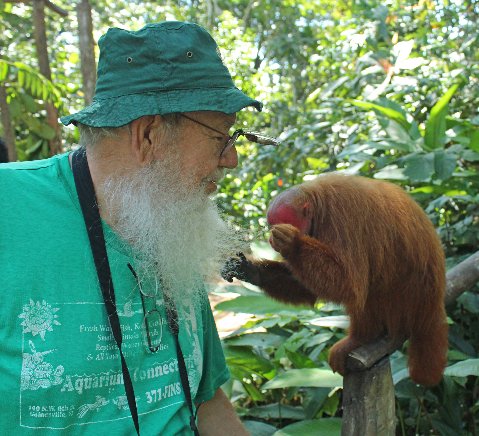Somewhere, somehow, and I don't remember where or why, the first species of rat snake that I can remember seeing was a colored drawing in a book.
I seem to remember that the picture was simply captioned "Four-lined Rat Snake." and although other information was probably provided, I don't remember what this may have been. But I do know that I came away from that introduction with a firmly entrenched mind-picture of what a four-lined rat snake was supposed to look like. And as it turned out, for an American herper, it was an erroneous mind-picture.
Years later, after meeting a fair number of our "four-lined rat snakes" (as the yellow rat snake,
Pantherophis obsoletus quadrivittata, was once known), I realized that there was a fly in the ointment. Our four-line was decidedly different than the one in memory.

Why was this, I wondered? With a few library visits I found out.
There was our American four-lined rat snake (then being ever increasingly referred to as a yellow rat), and there was a European four-lined rat snake,
Elaphe quatuorlineata, and it was this latter I had first seen depicted.
OK. Now I could at least put names with faces (so to speak), and this made me feel a bit better. Following the advent of the Internet, finding pictures of the European species became a snap. But it was not until 2010 that I actually had a European four-line in hand. And that one, a hatchling, certainly did not look like the picture in the old book.
But by the time it was 3 years old, ontogenetic changes had changed the strongly blotched baby to the striped (lined) snake that had initially confused me so. It was a long wait but the end result well worth the time.
More photos under the jump...
Hatchling European four-lined rat snake:

Two-and-a-half year-old European four-lined rat snake:

 Author, photographer, and columnist Richard Bartlett is one of the most prolific writers on herpetological subjects in the 20th century. With hundreds of books and articles to their credit, Richard and his wife Pat have spent over four decades documenting reptiles both in the field and in captivity. For a list of their current titles, please visit their page in our bookstore. Author, photographer, and columnist Richard Bartlett is one of the most prolific writers on herpetological subjects in the 20th century. With hundreds of books and articles to their credit, Richard and his wife Pat have spent over four decades documenting reptiles both in the field and in captivity. For a list of their current titles, please visit their page in our bookstore. |




To prevent automated Bots from commentspamming, please enter the string you see in the image below in the appropriate input box. Your comment will only be submitted if the strings match. Please ensure that your browser supports and accepts cookies, or your comment cannot be verified correctly.